Article Images

Small Elephant Hawk-moth Deilephila porcellus

White moths such as the White Ermine have a different meaning to cultures around the world

ghost

Puss Moth Caterpillar

Scarce Crimson and Gold

Swallow-tailed Moth

Caterpillars are herds of mini grazers turning vegetation into nutrients and building soils

During the British Industrial Revolution of the 19th Century observations of the Peppered Moth (above) lead to an amazing discovery. In the dirty, soot covered, urban and industrial area the charcoal coloured variety of this moth became more common than the typical pale variety shown here. This in an example of an evolutionary directional colour change, where the dark moths had a survival advantage and over generations became the dominent form in certain areas. The genetic mutation responsible for the dark form may only have occured in the first decades of the 19th century, but by 1895 it was reported that in Manchester 98% were the dark variety. In the late 20th century with the introduction of cleaner air, changes in technology and the decline of heavy industry, the dark form had become scarce once again. The moths place in evolutionary biology was secured.
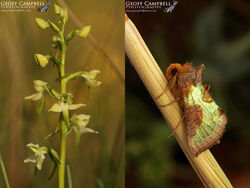
Moths such as the stunning Burnished Brass are the key pollinators of many of our wild orchids, such as the Butterfly Orchid. The flowers have co-evolved with moths, giving of their greatest fragrance at night. The moths long proboscis is required to access the nectar, whilst to sepals required for pollination are perfectly located to attach to the head of the moth.

Merveille du Jour

The Sallow Kitten is not overly rare, but it is a favourite of mine. It took me several years to find one and I still smile every time I find one

Another master of mimicry, this time of a wasp, is the Lunar Hornet Moth. Again it cannot sting, but fools predators by it’s appearance. It’s early life is interesting as well. The female lies her eggs on the bark of a willow tree. The hatched larvae burrows into the trunk of the tree, feeding on the internal wood. After a year it emerges, only to re-enter the tree further up, and feeding for another year, before it finally emerges as an adult moth.

The Chinese Character is one of a number of species with markings and resting pose to look like bird droppings to prevent being predated.

One of our largest moths, the Eyed Hawk-moth in it’s normal resting pose is drab and and camouflaged against tree trunks. When it is threatened though, it exposes the large blue eyes on the hindwing. Sometimes it will wiggle it’s body and hindwings to further emphasis this defensive strategy. This species is present, though scarce in North Antrim.

Saxon & Alder

Rapidly moving north and the west the Devon carpet recently reached North Antrim. Whilst it is nice to see new species the factors driving these changes is of concern,

Yellow-ringed Carpet below Fair Head

The stunning caterpillar of the Chamomile Shark only feeds on a few plant species in North Antrim, but in particular Scentless Mayweed. This plant is primarily coastal, therefore so is the moth.

The Life Cycle of the Emperor Moth in North Antrim. From the female laying eggs, to the caterpillar, then pupating in a cocoon, to finally the male in flight.

Breen Oakwood remains one of the best sites for the beautiful Merveille du Jour in the region.

Two charismatic moths lost from North Antrim by the early 20th Century - Belted Beauty and Portland Moth

Ballycastle golf course with Fair Head in the background. This may have been the last site for the Belted Beauty in Northern Ireland.

The population of the stunning Garden Tiger collapsed by over 90% since the late 1960s. Mild, wet winters and warm springs are believed to have impacted larval survival

The Scarce Silver Y has suffered a 69% reduction in abundance and 71% shrinkage in distribution in Britain in recent decades

The Buff-tip is not particularly colourful, but it's intricate markings which mimic broken twigs is amazing camouflage.

Some moths adapted to the cooler climate of northern regions, such as the Grey Mountain Carpet appear to be retreating in distribution. This species has experienced a 81% decrease in distribution between 1970 and 2016.
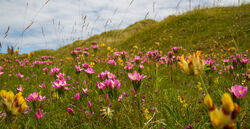
Species rich grasslands are an important source of nectar for adult moths and provide a wide range of food-plants for their larvae. Decades of loss and fragmentation has had significant impacts on our nature.

Recent studies have shown that the most dramatic declines in moth numbers have been in woodland species, such as the Copper Underwing. The reasons are not fully understood, but perhaps woodland species have been the least impacted by declines up to now.

Homemade LED UV Moth Trap on the Slopes below Fair Head. The white sheet helps with finding moths that settle around the trap rather than in it.

Small Chocolate-tip (Clostera pigra) caterpillar

Spectacle (left) & Dark Spectacle (right)

November agg comparison

Small Eggar Adult Moth and Larval Web
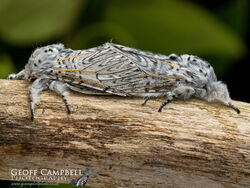
Puss Moth 1

Beech-green Carpet Colostygia olivata

Narrow-bordered Bee Hawk-moth Hemaris tityus

Emperor Moth (Saturnia pavonia) Female

Emperor Moths in Flight Over Garry Bog

China Mark moths such as the Beautiful China-Mark are unusual in that their larvae are entirely aquatic, living underwater on water lily leaves and bur-reeds.

#YellowHorned0317 7

FrostedOrange0818 3

Merveille du Jour0920 20a

#BorderedBeauty0823 5

The Narrow-bordered Bee Hawk-moth is a bumblebee mimic to avoid being eaten. It has recently been found at a number of sites in North Antrim. It is a day-flyer in similar flower rich habitats in which bees are found. And don't worry it doesn't sting.

#Brimstone0521 2

The female Vapourer is one of a number species which is flightless. Instead it relies on the release of pheromones to attract males. Unfortunately this means that if the species is lost from an area recolonisation is difficult, especially when habitats are isolated.

#BrindledOchre1018 7

#CanaryShoulderedThorn0918 8
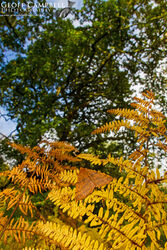
#FeatheredThorn1018 1

#LilacBeauty0719 2

The stunning Pine Beauty on the move north across Europe and recently recorded in North Antrim

The wooded Glens of Antrim are very important for many moth species, including several rare species

Sallows Comparison - Centre Barred (top), Pink Barred (left) and Sallow (right)
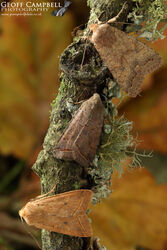
Brick (top), Red-line Quaker (middle) and Yellow-line Quaker (Bottom)

Dark Chestnut (left) & Chestnut (right)

Poplar Hawk-moth (Laothoe populi)

Narrow-bordered Bee Hawk-moth (Hemaris tityus)

Humming-bird Hawk-moth (Macroglossum stellatarum)

Yellow-ringed Carpet (Entephria flavicinctata) & Grey Mountain Carpet (Entephria caesiata)

Red Green Carpet (left) & 2 Autumn Green Carpets

Vapourer (Orgyia antiqua) Caterpillar
